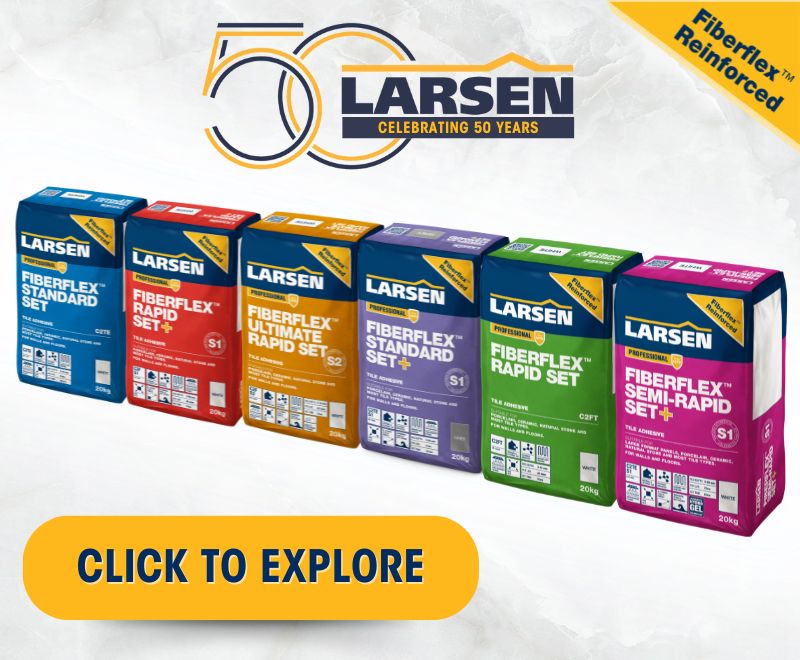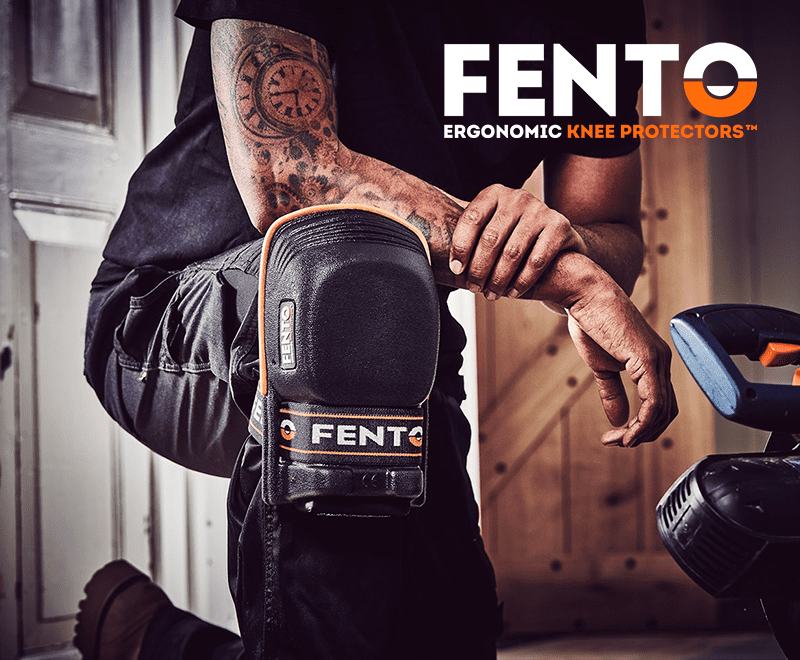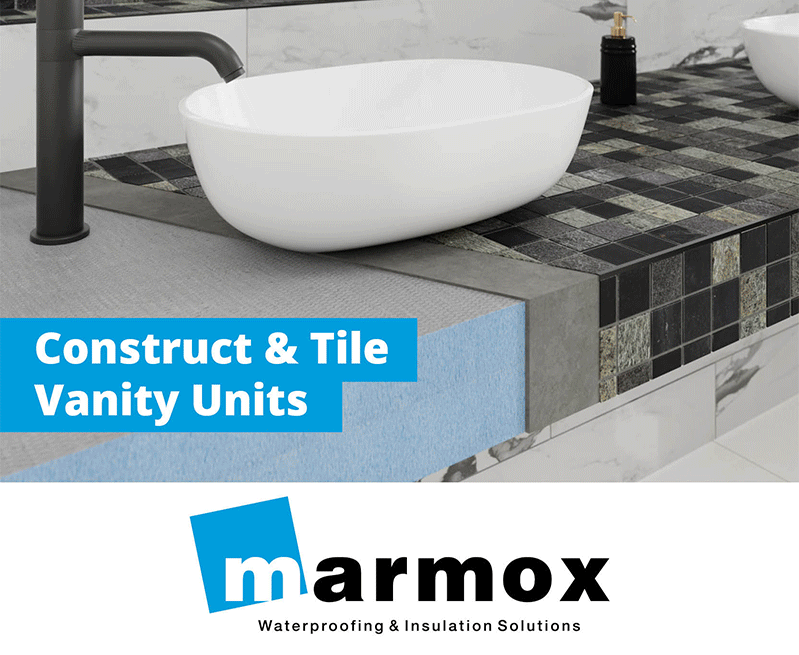Lino Ciriaco, ARDEX Group training and technical support manager, provides a guide on uncoupling and the benefits of cavity mat systems and thin lightweight systems.
With today’s requirements for large tiles, faster installation and the use of more demanding substrates, uncoupling membranes for floor tiling are often becoming a necessity.
Uncoupling principles have existed for centuries with the Romans being the first documented users of the building process which incorporated an “uncoupling” method.
These early practices used a mud bed to separate the substrate (a two-inch thick layer of packed and flattened sand and cement) and the tiles.
Both systems use the separating layer to provide an uncoupling buffer between the tile and the substrate, enabling the substrate to move independently to the tiles.
Modern uncoupling system methods have dramatically improved, but the same basic principles still apply for today’s uncoupling mat systems which are now in common use on floor tiling installations onto various substrates.
Whether they’re called decoupling, uncoupling or even “anti-fracture” mats, they all perform the same function, and that is to provide a buffer zone between tile and substrate, protecting against lateral movement. They protect against various problems that can cause tiles to crack or de-bond.
Coming in many forms, from thin, lightweight matting, traditional cavity mat systems or truly uncoupled floating systems for unprepared screeds, they give tilers and contractors piece of mind when floor tiling.
One common problem is the potential for the substrate to contract or expand. In particular, newly-laid sand:cement screeds or concrete may contain large amounts of moisture, which as it evaporates, causes the screed to shrink.
However, all substrates will expand and contract naturally owing to humidity and/or temperature fluctuation. This is especially true where underfloor or under-tile heating has been installed.
What’s more, certain water-sensitive substrates, such as anhydrite screeds (or calcium sulphate) will lose their cohesive strength if they get wet. Wood is a hygroscopic material, and this, therefore, increases the potential risk of dimensional changes occurring in boards owing to moisture expansion and drying shrinkage movement resulting in lateral movement stress being generated between the board background and the rigid ceramic tile finish.
Any movement, whether shrinkage or expansion, can cause stress cracks that can transfer through to the tiled surface, causing the tile to either fracture, or de-bond from the background. Uncoupling matting helps to prevent these lateral stresses from transferring through to the tiled layer by absorbing these stresses and transferring them evenly over the floor. Matting also has the ability to bridge static cracks i.e. shrinkage cracks up to 2mm wide and joints between sheet and board backgrounds.
Another benefit of modern matting systems is their suitability for waterproofing. In areas subject to moisture exposure where additional movement can occur, uncoupling mats can be used in conjunction with tanking products to ensure a combination of waterproofing and uncoupling can be achieved.
When waterproofing or no priming of the matting is required, do ensure the membrane and liquid coating can interface with the chosen drain. It’s worth noting that anhydrite screeds and gypsum-based materials aren’t considered suitable for the installation of wet areas.
While the uncoupling membrane was originally devised for the installation of ceramic tiles, uncoupling systems are now recommended for use when tiling natural stone on all substrates.
Importantly, uncoupling mattings are now recognised by most floor trade associations related to the tiling industry as a major benefit. Both the TTA and the Stone Federation of Great Britain recognise the value of using these products and also gives reference to their use in BS 5385 part three, four and five.
Cavity mat systems vs thin lightweight systems
Two primary types of uncoupling mats are thin lightweight uncoupling mats and traditional cavity mat systems, each offering unique benefits.
Thin lightweight uncoupling mats are designed to be easy to handle and install owing to their reduced weight and slim profile.
These mats are typically made from advanced polypropylene, offering flexibility and exceptional crack isolation properties. Their lightweight nature makes them ideal for installations where reducing load is a priority, such as on upper floors or over existing flooring. Additionally, their thinness ensures minimal height buildup, which is beneficial in renovation projects where maintaining consistent floor levels is crucial. They can also be used with all types of tiles, including mosaics.
Traditional cavity mat systems
On the other hand, traditional cavity mat systems are thicker and often feature a grid-like structure with cavities designed to allow for optimal adhesive bonding and moisture management.
The cavities in these systems help manage thermal and moisture-related expansion and contraction, making them ideal for areas prone to significant changes in temperature and humidity.
However, unlike thin systems, they often have tile size limitations – for example they aren’t suitable for geometric or mosaic floor tiles.
Cavity mat technology is also available with bonded and unbonded options, with unbonded systems providing a much faster and lower cost system (removing the need for an initial bed of adhesive and other preparation materials such as primers) and can be used on heritage or rental sites as well as commercial or domestic projects.
In summary, the choice between thin lightweight uncoupling mats and traditional cavity mat systems depends on project-specific requirements such as weight, height, and environmental conditions. Both systems offer reliable solutions, each tailored to different installation needs.
Adhesive selection
When installing uncoupling systems, we would also recommend using a rapid-setting flexible tile adhesive. If you choose the right adhesive, with good adhesion and long open and working times, there should be no need to water-down your adhesive. Stick to the manufacturer’s guidance on mixing your adhesive.
Once the matting has been applied with a rapid setting tile adhesive, the tiling can begin immediately when using a BAL or ARDEX uncoupling system (check with your mat manufacturer). When tiling onto an uncoupling mat system we would always recommend the use of a flexible tile adhesive that’s highly polymer modified for example minimum C2 cementitious adhesive.
For large format tile and natural stone, it’s recommended to use a pourable thick bed adhesive applied with a suitable large format trowel. Pourable thick bed adhesives will help achieve solid bed fixing, particularly with larger format tiles, ensuring all voids beneath the natural stone are filled and proper adhesion is secured.
What is certain is uncoupling systems will continue to grow in popularity and will need to be considered at every stage of the design and build process, particularly with the growth of tiling in areas where it was previously deemed unsuitable.
Covering the whole of the UK, ARDEX Group training and technical support managers offer practical knowledge and on-site consultancy and training to tiling and flooring contractors.
01440 714939
info@ardex.co.uk
www.ardex.co.uk











